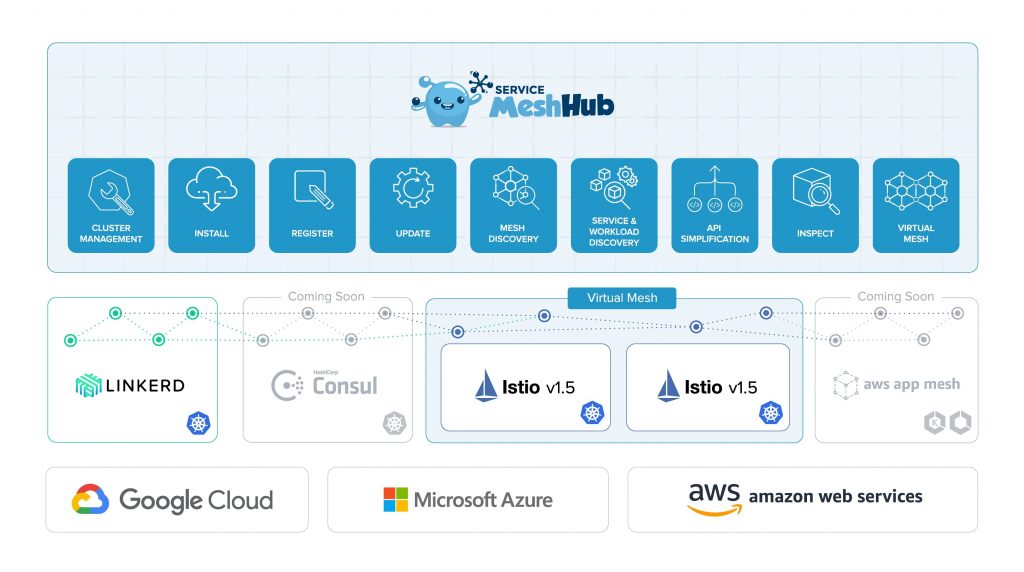Solo.io Open Sources Service Mesh Hub
Solo.io is making a Service Mesh Hub available as an open source project to make it easier for IT organizations to automate the management of network and security services.
Company CEO Idit Levine says Service Mesh Hub provides a unified dashboard for installing, discovering, operating and extending a single service mesh or group of meshes that can be combined in the single virtual mesh.
In addition, Service Mesh Hub has been updated to add support for the latest 1.5 release of Istio, an open source service mesh being advanced by Google, IBM and Lyft, among others.
 Levine says Solo.io developed Service Mesh Hub to make service mesh platforms more accessible. While service meshes play a critical role in enabling organizations to manage and integrate microservices, implementing a service mesh is a major challenge. Service Mesh Hub leverages a Service Mesh Interface (SMI) Specification it developed in collaboration with Microsoft to make it easier for IT teams to configure a service mesh. The Service Mesh Hub provides a set of graphical tools that makes it easier for the average IT administrator to provision a service mesh, he says.
Levine says Solo.io developed Service Mesh Hub to make service mesh platforms more accessible. While service meshes play a critical role in enabling organizations to manage and integrate microservices, implementing a service mesh is a major challenge. Service Mesh Hub leverages a Service Mesh Interface (SMI) Specification it developed in collaboration with Microsoft to make it easier for IT teams to configure a service mesh. The Service Mesh Hub provides a set of graphical tools that makes it easier for the average IT administrator to provision a service mesh, he says.
While there is a lot of interest in all the variants of a service mesh that are now available, the complexity of platforms that were designed mainly by software engineers for other engineers has limited adoption. Via the Service Mesh Hub, the rate at which network operations is being incorporated within DevOps processes will only accelerate, says Levine.
A service mesh doesn’t necessarily require a Kubernetes cluster, but Levine says service mesh assumes the presence of network services that have been abstracted by Kubernetes. As such, whenever a service mesh is deployed it’s most often within the context of a Kubernetes environment. That’s especially true in IT organizations that are already extending DevOps processes to programmatically invoke network services, he notes.
Longer-term, Levine adds it’s apparent that as service meshes are extended using filters to add, for example, a software-defined firewall, it will become easier for organizations to replace any number of network hardware appliances. Solo.io has already made available a set of WebAssembly tools for extending service mesh platforms.
Many organizations are likely to implement multiple service meshes over time as different teams take different approaches to managing microservices. As such, it will be important for IT organizations to have a set of consistent tools to manage different service meshes. Less clear is what role networking professionals will play beyond continuing to manage the physical network underlay that service meshes abstract away from developers.
Whatever the path forward, it is clear major cultural change is coming to network operations. Each organization will need to decide how much control over network services they want to give individual DevOps teams. Historically, networks have been too brittle to allow anyone other than a network engineer to manually provision network services using command-line interfaces (CLIs) for each router, switch and appliance on the network. At a time when organizations are looking to ruthlessly drive cost out of IT operations by embracing automation, however, the manual provisioning on network resources may be a luxury many organizations can no longer afford.




